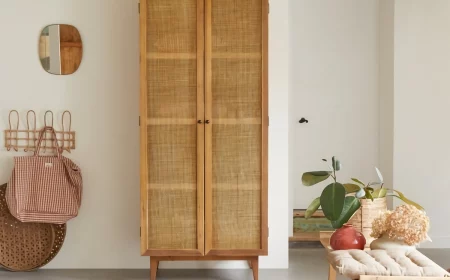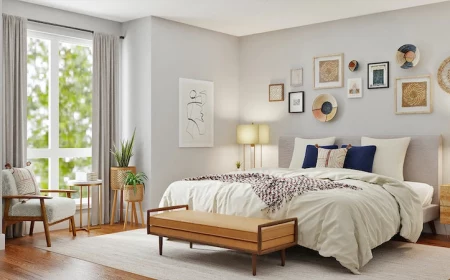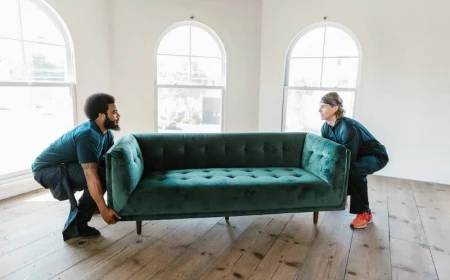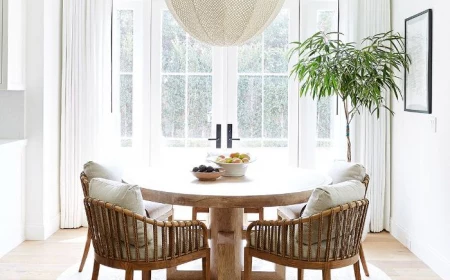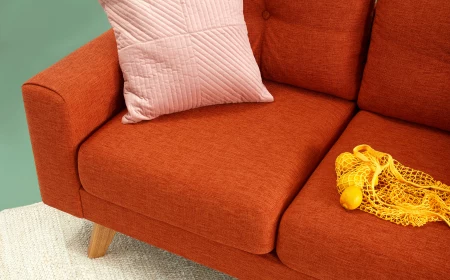Sliding vs. Bi-Fold Wardrobe Doors: Which One Won’t Drive You Crazy?
After building custom cabinets and wardrobes for what feels like a lifetime, there’s one question that comes up on every single job. A client will be standing in a room, pointing at a blank wall, and they’ll ask, “So… should we get sliding doors or bi-folds?” It sounds simple, but honestly, the answer is a rabbit hole of hardware, home construction, and how you actually live your life.
In this article
Most articles you find online give you a basic pros and cons list. They say sliding doors save floor space and bi-folds give you a full view of your stuff. And while that’s true, it’s like saying a car has wheels—it’s only the very beginning of the story. I’ve installed hundreds of both, and I’ve also been the guy called in to fix the ones that squeak, buckle, or just refuse to cooperate.
So, let’s have the real conversation I have with my clients. We’ll get into the guts of how they work, the installation secrets, and the long-term realities most people don’t think about until it’s too late.
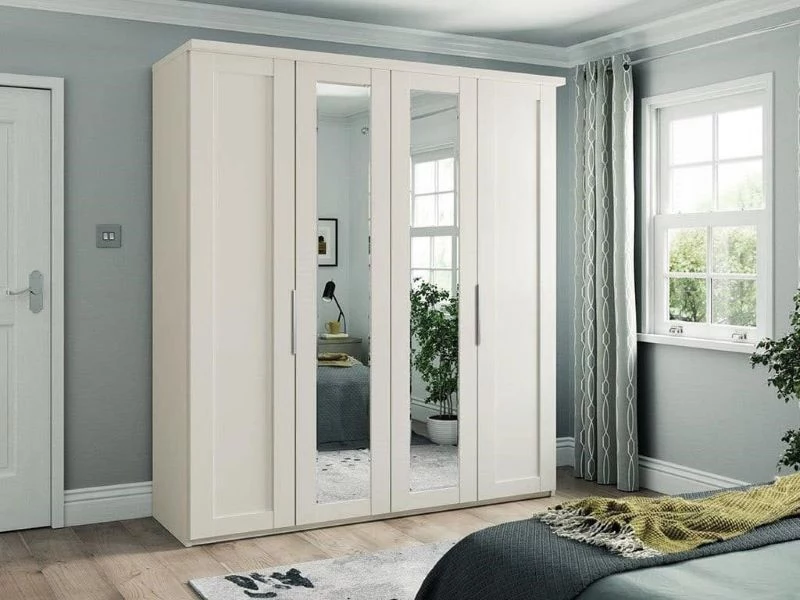
The Quick-and-Dirty Breakdown
Don’t have time for all the details? Here’s the snapshot view to get you started. Think of this as the cheat sheet.
- Floor Space: Sliding doors win here, hands down. They need zero space to open, making them perfect for tight bedrooms or narrow hallways. But, a bi-fold door needs room to swing out—usually the width of one door panel.
- Wardrobe Access: Bi-folds are the clear winner. You open them up and, voilà, your entire wardrobe is visible. It’s perfect for planning outfits. With sliding doors, at least a third or half of your closet is always hidden.
- Wide Openings: For really wide closets (think over 6 feet), sliding doors are generally the better, more stable option. You can have three or even four doors, giving you flexible access without a huge stack of folded doors getting in your way.
- DIY Friendliness: A standard bi-fold door kit on a square frame? Totally doable for a patient DIYer. A big, heavy, top-hung sliding door system? That gets tricky fast. More on that later.
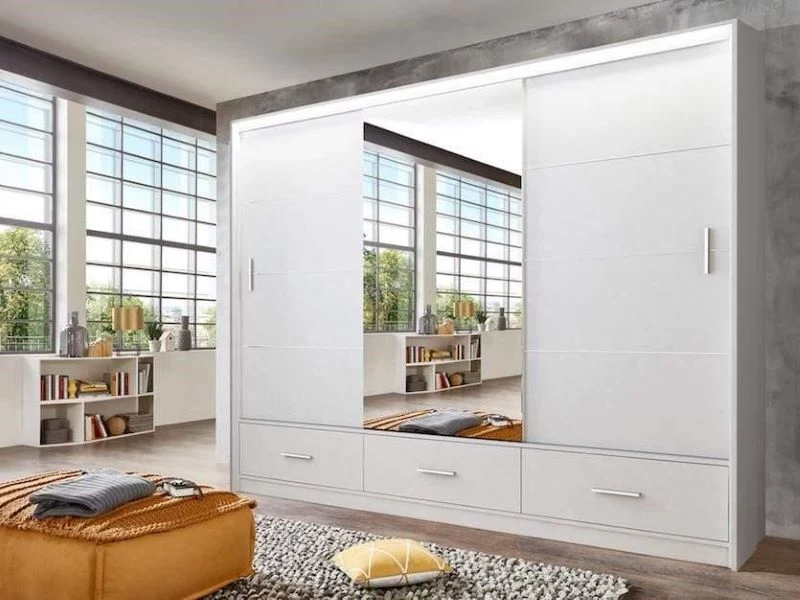
The Mechanics: What’s Really Happening on the Track
To pick the right door, you have to get what makes it move. The quality of the hardware is everything. It’s the single biggest difference between a cheap, wobbly unit and a system that glides like butter.
How Sliding Door Systems Work
A sliding door just moves sideways on a track, right? Well, yes, but there are two very different ways it can do that, and this choice changes everything.
Bottom-Rolling Systems
This is what you’ll find in most affordable, off-the-shelf wardrobe kits. The door’s entire weight rests on little wheels that roll on a track fixed to the floor of the wardrobe. The top track is just there to stop the doors from tipping over. A cheap, all-in-one bottom-rolling kit from a big-box store might only set you back $200, but you get what you pay for.
- A Pro’s Insight: The success of this system depends 100% on a perfectly level track. If your floor is even slightly off, gravity will make the door roll to the lowest point. I’ve lost count of the clients who say their door “opens by itself.” It’s not a ghost; it’s an unlevel track. We spend ages with shims and a long level to get this right.
- The Hardware Truth: Cheap kits use basic plastic wheels that crack, get noisy, and fill with gunk. Quality hardware uses nylon or polyurethane wheels with sealed ball bearings. The sound tells you everything: a good door makes a soft, low hum; a cheap one makes a grating, rattling sound that only gets worse.
Top-Hung Systems
Now we’re talking. In a top-hung system, all the door’s weight hangs from heavy-duty rollers inside a track screwed to the ceiling or a sturdy header. A tiny guide on the floor, often hidden, just keeps the door from swinging. This is the go-to for heavy, high-end doors made of solid wood or glass.
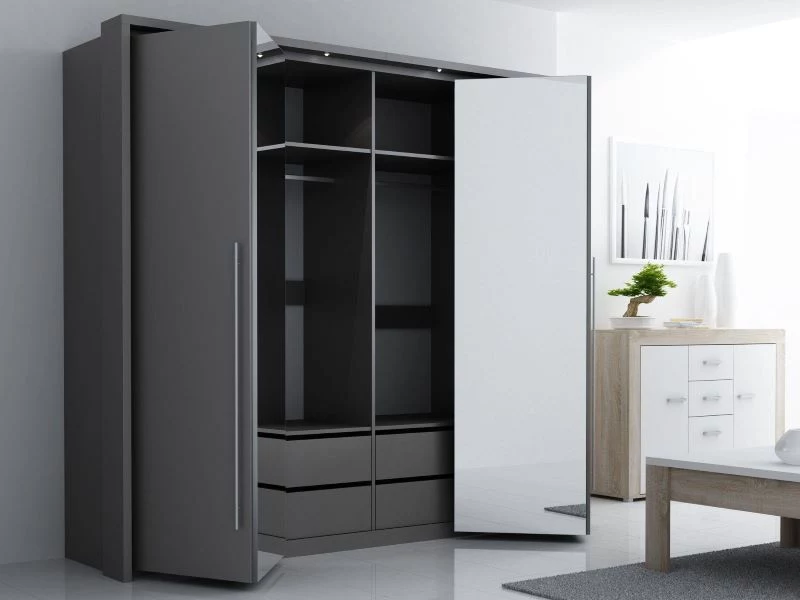
- Heads up! The physics here are serious. The entire load is hanging, so that top track needs to be anchored into something solid—like ceiling joists or a wooden header we install between wall studs. Screwing it into plasterboard alone is a complete disaster waiting to happen. I once fixed a job where a homeowner’s heavy mirrored door ripped right out of the ceiling and fell. For safety, this is non-negotiable.
- The Hardware Upgrade: This hardware is more complex and pricier. Just the hardware for a good top-hung system can run you $400 to $800. You won’t find this stuff at Home Depot. Look at specialty online woodworking stores like Richelieu or Rockler—they sell pro-grade hardware to the public. These systems often include soft-close mechanisms, which are little hydraulic pistons that catch the door and pull it shut silently. It’s a touch of class you can feel.
How Bi-Fold Door Systems Work
Bi-folds are a different beast. They use pivots and guides. One side of the door pivots on pins at the top and bottom, while a guide on the other side runs in a top track, allowing it to fold in the middle.
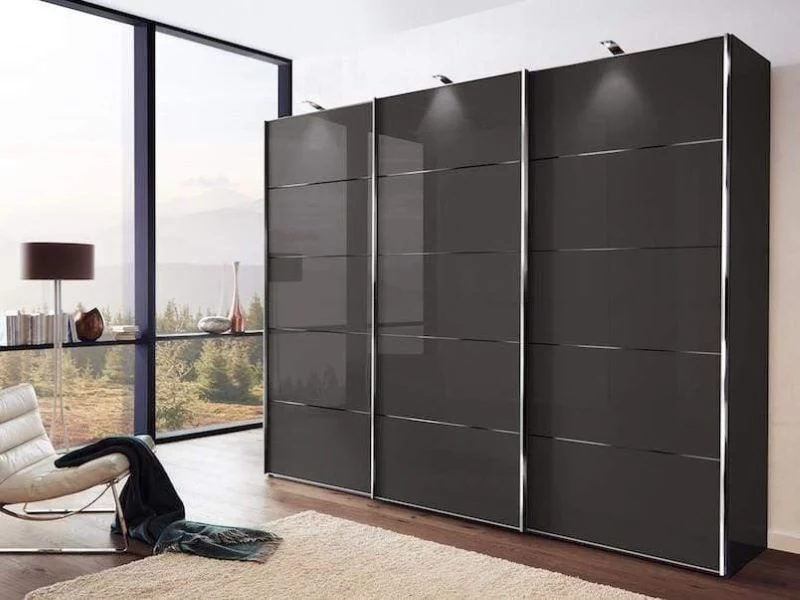
- The Physics: The key here is that the top track isn’t holding the weight; it’s just guiding the door. All the stress is on the bottom pivot point. That’s why that little bracket has to be incredibly secure. It’s also why alignment is king. If the top and bottom pivots aren’t perfectly plumb (vertically aligned), the doors will scrape, bind, and never close right.
- Quick Tip: When I teach apprentices to install bi-folds, the first thing I have them do is set that bottom pivot bracket. I make them check its position and level five times before moving on. Get that one point right, and the rest of the job is a breeze. Get it wrong, and you’ll be sanding and adjusting for hours.
Pro Installation Tricks (Beyond the Manual)
Getting a flawless finish comes from tricks you learn on the job, not from the paper instructions in the box.
Installing Sliding Doors Like a Pro
A perfect sliding door needs a perfectly square opening. In older homes, that’s basically a myth.
First, we check the walls, floor, and ceiling with a 6-foot level and a laser. If a wall is bowed, we don’t just shove the wardrobe against it and leave a huge gap. We scribe a filler strip.
By the way, here’s a little trade secret for a perfect fit against a wonky wall:
- Tack your filler board roughly into place, leaving it slightly overlapping the wardrobe edge.
- Set a simple compass or a scribing tool to the width of the biggest gap between the board and the wall.
- Run the point of the compass down the wall, letting the pencil trace the wall’s exact bumps and curves onto your board.
- Cut along that pencil line with a jigsaw. When you push it back, it’ll fit the wall like a glove. Perfect, gap-free finish.
The Art of Fitting Bi-Fold Doors
Bi-folds are way less forgiving than sliders. After setting the bottom pivot bracket, we use a plumb bob (a weighted string) or a laser to find the exact point directly above it for the top bracket. This guarantees the door will hang straight and swing true. It’s a simple step that prevents a world of frustration.
Let’s Talk Materials and Climate
What your doors are made of matters, especially depending on where you live.
- For Sliding Doors: Because they’re big, flat panels, they are a great canvas. In modern homes, sleek lacquered or melamine-faced panels are popular and come in endless colors. Mirrored or back-painted glass doors are also amazing for making a room feel bigger and brighter. Quick safety note: any glass or mirror in a door MUST be safety-backed. This means a plastic film on the back holds it all together if it breaks. A pro will refuse to install non-safety glass.
- For Bi-Fold Doors: These are often made from lighter materials to reduce stress on the pivots. Solid wood like pine is common for painted doors, while oak gives a more traditional vibe. Because they often have a frame-and-panel look, they can be made to match the other doors in your house for a really cohesive design.
Oh, and if you live somewhere humid? Solid wood bi-fold doors can be a nightmare. They’ll swell and stick in the summer. Engineered wood, like MDF, or panels made from materials like glass or melamine are much more stable and won’t give you seasonal headaches.
Troubleshooting and Long-Term Care
Like any moving part in your house, these doors need a little love to work well for years.
Your 5-Minute Homework: Go look at your current closet doors. If they’re sliders, run your vacuum’s crevice tool down the bottom track. I bet you pull out a ton of dust and hair. And I bet the door glides better instantly. See? Maintenance matters!
Here’s a quick-fire guide to common issues:
- Problem: My sliding door rattles and scrapes.
- The Fix: 9 times out of 10, it’s just gunk in the bottom track. Vacuum it out thoroughly. If that doesn’t work, the cheap plastic wheels have probably worn out and need to be replaced. And please, don’t spray WD-40 in there; it just attracts more dust and makes a sticky mess.
- Problem: My bi-fold doors are sticking or won’t close properly.
- The Fix: First, check that the bottom pivot bracket is still tight; screws can loosen over time. Then, check the pivot alignment. A tiny drop of dry silicone spray (not oil!) in the top track and on the pivot points can also work wonders.
DIY vs. Hiring a Pro: The Moment of Truth
This is the most important part. Big, heavy doors can be genuinely dangerous if they aren’t installed correctly.
Thinking of tackling this yourself? Be honest about your skills and your tools. Don’t even start unless you have:
- A good 6-foot level (that little torpedo level in your junk drawer won’t cut it).
- A stud finder that actually works.
- A reliable drill/driver.
- A plumb bob or a cross-line laser.
Good to know: The cost of buying these tools might be half the cost of just hiring a pro for the day! Expect a good carpenter to charge anywhere from $500 to $900 for a day’s labor, depending on your location and the job’s complexity.
So, when can you DIY? Fitting a simple, lightweight bi-fold door into a closet that’s already square is a manageable project. Be realistic, though—this is a solid weekend project for a first-timer. But installing a heavy, top-hung sliding system into an old house with crooked walls? That’s a job for an experienced pro. The risk of getting it wrong is high, and the consequence—a 100-pound mirrored door falling down—is serious. Sometimes, the best money you can spend is on the peace of mind that it was done right.
Inspirational Gallery
My new sliding doors feel wobbly. Did I get a bad set?
Probably not! The most common cause of wobble is an improperly installed or missing floor guide. This small, often U-shaped plastic or metal piece is crucial for keeping the base of the doors aligned. Also, check if your floor is perfectly level. If it isn’t, the top track may need shimming during installation to ensure the doors hang perfectly vertical, which prevents swaying and binding.
The right hardware can make a £150 door feel like it’s worth £1000. The wrong hardware will do the opposite.
This is where your budget should stretch. While the door panels provide the look, the track and roller system determines the daily experience. Basic kits often use plastic rollers that wear out and get noisy. Investing in a system from a brand like Hettich or Raumplus with ball-bearing wheels and soft-close mechanisms is a long-term upgrade you’ll appreciate every single day.
- Create the illusion of a larger room.
- Bounce natural light into darker corners.
- Allow for a full-length outfit check without a separate mirror.
The secret? Mirrored sliding doors. They are a classic designer trick for making small or narrow bedrooms feel more expansive and airy. For a modern take, consider panels with a slim, black metal frame to add a graphic touch.
Top-Hung Systems: The doors hang from rollers in an overhead track, with only a small guide on the floor. This provides a clean, seamless look with no bottom track to trip over or collect dust. Ideal for most situations, especially over carpeting.
Bottom-Rolling Systems: The weight of the door rests on wheels in a floor-mounted track. These are often easier to install on non-load-bearing frames but require a perfectly level floor. The track can also be a magnet for dirt.
For most residential renovations, a quality top-hung system like those from Johnson Hardware is the superior choice for a smooth, long-lasting operation.
The minimalist aesthetic of modern sliding doors owes a debt to Japanese interior design. Traditional fusuma—sliding panels made of wood and paper used to redefine spaces—are the original inspiration. They embody the idea of flexible, unobtrusive division, a principle perfectly translated to the modern space-saving wardrobe door.
The handle dilemma: One of the most overlooked details with sliding doors is handle clearance. If you choose bulky or protruding handles, you might find the doors can’t fully bypass each other, reducing your access to the closet. For maximum opening, opt for recessed flush pulls or integrated edge pulls that don’t add to the door’s profile.
Over 40% of people report that their sleep is disturbed by noise.
While we often think of outside traffic, the sounds inside our home matter too. A squeaky, grinding wardrobe door can be a major irritant, especially in a quiet bedroom. This is why investing in quality soft-close mechanisms for either sliding or bi-fold doors isn’t just a luxury—it’s a contribution to a more peaceful, serene living environment.
Don’t be limited by off-the-shelf finishes. You can easily customize standard, affordable bi-fold doors to perfectly suit your decor.
- Start with simple, unprimed MDF or wood veneer doors.
- Lightly sand all surfaces to create a ‘key’ for the paint.
- Apply one or two coats of a high-adhesion primer, like Zinsser B-I-N. This is the most crucial step.
- Finish with two coats of your chosen colour in a durable eggshell or satin finish for a bespoke look.
Think beyond wood and mirrors. The material you choose for your doors sets the tone for the entire room. Consider translucent frosted glass panels to hint at the contents without revealing clutter, creating a light, airy feel. For a touch of warmth and texture, rattan or cane webbing inserts are making a huge comeback, adding a natural, bohemian vibe to the space.

